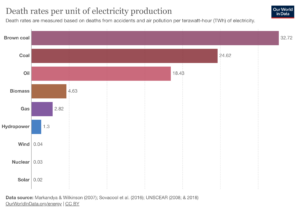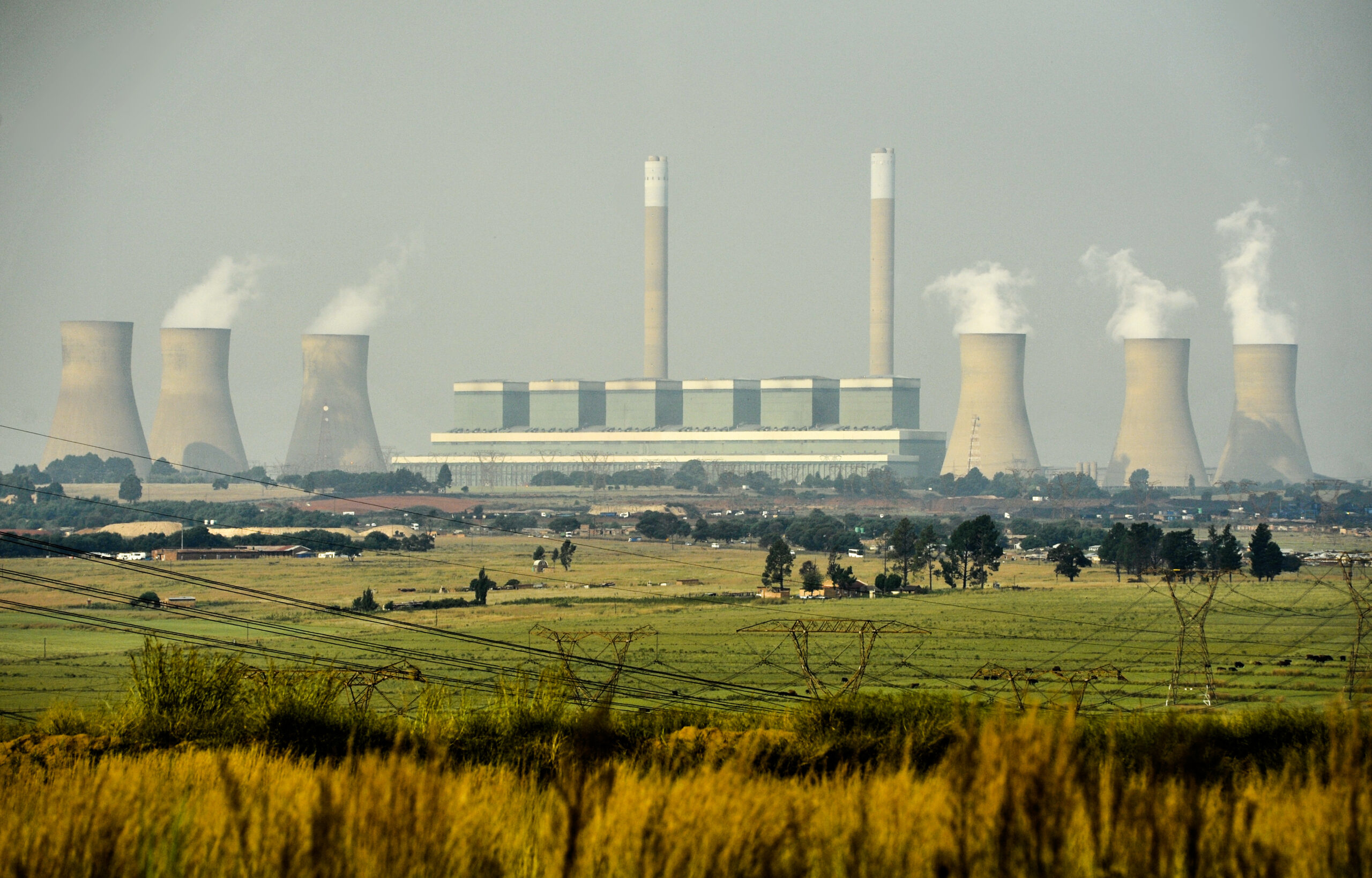The false promise of ‘clean’ coal in South Africa
The idea of “clean” coal has been an industry pipedream for decades. This idea is mainly promoted by those with vested interests in the survival of this dirtiest energy source.
Even despite rapid technological advances in recent years, clean coal remains an illusion. Even in the best-case scenario using the cleanest available technology, there are no solutions to neutralise coal’s severe environmental, health and climate consequences. It is also financially unviable and risks stranded assets, particularly for nations such as South Africa with abundant cleaner and cheaper alternative energy sources such as wind and solar.
‘Clean’ coal vs reality
In practice, clean coal projects have so far failed both environmentally and financially. For example, the United States Kemper power plant promised to be a world leader in clean coal technology. “It turned out to be like a mirage”, said Brett Wingo, an engineer who first went public with his concerns. The failed project wasted hundreds of millions in federal taxpayer funds, “leaving locals out of work and shareholders out of pocket.”
Another, known as SaskPower’s Boundary Dam 3, has been forced to shut down numerous times, significantly underperformed meetings emissions reduction targets, and grapples with an unresolved issue with its core technology. The associated costs have also skyrocketed, demanding tens of millions of dollars for additional equipment and necessary repairs.
What is meant by ‘clean’ coal technology?
A 2019 report from the Life After Coal/Impilo Ngaphandle Kwamalahle campaign thoroughly analysed the many environmental and health issues surrounding the prospect of “clean” coal in South Africa. They explained the following technologies are generally relied on by its proponents:
High Efficiency, Low Emissions (HELE) plants
Using Supercritical and ultrasupercritical (USC) boiler technology, HELE plants are characterised as equipped with state-of-the-art pollution controls. They are promised as to address the high greenhouse gas (GHG) emissions and pollution caused by coal-fired power plants.
However, at best, this technology only reduces CO2 by about 20 per cent. Harmful air pollution, including particulate matter (PM), sulphur dioxide (SO2) and nitrogen oxides (NOx) also remain significant. HELE plants also require a substantial increase in capital and operating costs, making them financially unviable when compared to wind and solar investments.
Circulating Fluidised Bed (CFB) combustion systems
CFB systems can use lower-quality coal, including discard coal, if lime is injected directly into the furnace to control health-harming SO2 emissions. One fundamental problem is that this method can create up to ten times more NOx emissions than pulverised coal technologies used by most of Eskom’s stations. NOx is a potent, long-lasting GHG, with a global warming potential 300 times that of CO2.
This technology also produces significantly more waste coal ash than pulverised fuel boilers. This coal ash contains toxic chemicals such as arsenic, lead, mercury, and chromium, which are associated with severe health impacts. With 60 million tons accumulating every year, CFB technology will worsen this pressing issue.
Carbon Capture and Storage (CCS)
CCS technology is designed to capture, inject, and permanently store CO2 emissions (only) underground. There are several significant unresolved problems with CCS, including uncertainty around long-term leakage and high costs. This technology has also yet to be proven at the required scale.
The South African Centre for Carbon Capture and Storage (SACCS) is attempting to demonstrate that it is feasible to implement this technology around the geology of South Africa’s coal plants, yet it has yet to conclude this is the case.

Even the “cleanest” coal is a filthy fuel
In 2019, the government released its Integrated Resource Plan for Electricity (IRP), which proposed adding 1500 MW of new coal generation in the country. It claimed this coal will be “cleaner” because HELE generation technology will be used.
However, a report commissioned by the Centre for Environmental Rights (CER ) and published in 2021, found that even in the most optimistic scenarios using the cleanest available technology, large quantities of climate and health air pollutants would be unavoidable.
Dr Ranajit Sahu, who led the research, said: “I want to stress that contrary to implications in the 2019 IRP and the Ministerial determination, there is simply no such thing as “clean coal”, regardless of whether HELE technologies are used to minimise air emissions from coal (or gas derived from coal).”
Dr Sahu warned that new coal generation in South Africa will be unnecessary, costly, highly detrimental to the environment, and conflicts with the government’s legal obligations. “New coal generation flies in the face of the South African government’s obligation under international and South African law, including the South African Constitution, to take all reasonable measures to protect its people from the impacts of climate change.”
These plans for additional coal capacity is also economically damaging. A report from the University of Cape Town warns that it will cost at least R23 billion more than a least-cost optimal electricity plan for South Africa, raise electricity bills for consumers and result in 25,000 economy-wide job losses by 2030.
Moving beyond the pipedream
Although the reality of ‘clean’ coal in South Africa remains a political pipedream, Minister of Mineral Resources and Energy Gwede Mantashe continues to advocate for its role in the nation’s energy future. However, as the Life After Coal/Impilo Ngaphandle Kwamalahle campaign highlights: “Continued reliance and re-investment into expensive, unnecessary, and outdated infrastructure will ultimately be to the detriment of South Africa, coal-affected communities, coal workers, and the unemployed.”
To create an affordable and future-proofed energy system, a just transition from coal to clean generation is paramount. This urgent transition cannot be delayed by the false promise of ‘clean’ coal technologies, the group said.
Related Articles
The bad reason South Africa is making good on emissions targets
If current carbon emission trends continue, South Africa might actually be on track to meet its 2030 emissions targets under the Paris Agreement. This is according to research done by the Department of Forestry, Fisheries and the Environment (DFFE). And the reason for this? Mostly load shedding. The data was revealed in the DFFE’s 2023 […]
Eskom: Green energy saves water
Generating electricity from fossil fuels has a hidden cost: South Africa’s already scarce supply of fresh water.




